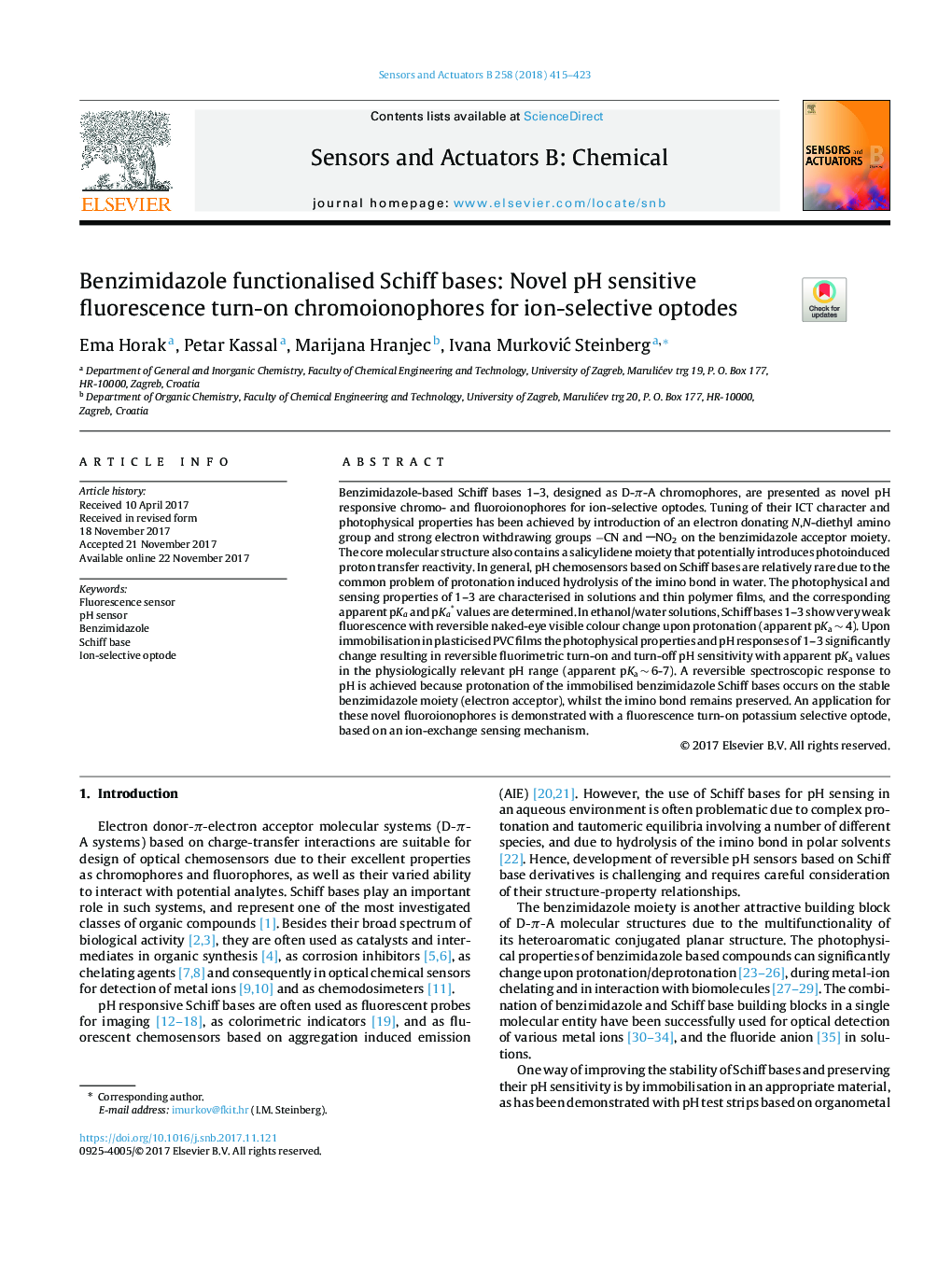| Article ID | Journal | Published Year | Pages | File Type |
|---|---|---|---|---|
| 7141208 | Sensors and Actuators B: Chemical | 2018 | 9 Pages |
Abstract
Benzimidazole-based Schiff bases 1-3, designed as D-Ï-A chromophores, are presented as novel pH responsive chromo- and fluoroionophores for ion-selective optodes. Tuning of their ICT character and photophysical properties has been achieved by introduction of an electron donating N,N-diethyl amino group and strong electron withdrawing groups âCN and NO2 on the benzimidazole acceptor moiety. The core molecular structure also contains a salicylidene moiety that potentially introduces photoinduced proton transfer reactivity. In general, pH chemosensors based on Schiff bases are relatively rare due to the common problem of protonation induced hydrolysis of the imino bond in water. The photophysical and sensing properties of 1-3 are characterised in solutions and thin polymer films, and the corresponding apparent pKa and pKa* values are determined. In ethanol/water solutions, Schiff bases 1-3 show very weak fluorescence with reversible naked-eye visible colour change upon protonation (apparent pKa â¼Â 4). Upon immobilisation in plasticised PVC films the photophysical properties and pH responses of 1-3 significantly change resulting in reversible fluorimetric turn-on and turn-off pH sensitivity with apparent pKa values in the physiologically relevant pH range (apparent pKa â¼Â 6-7). A reversible spectroscopic response to pH is achieved because protonation of the immobilised benzimidazole Schiff bases occurs on the stable benzimidazole moiety (electron acceptor), whilst the imino bond remains preserved. An application for these novel fluoroionophores is demonstrated with a fluorescence turn-on potassium selective optode, based on an ion-exchange sensing mechanism.
Related Topics
Physical Sciences and Engineering
Chemistry
Analytical Chemistry
Authors
Ema Horak, Petar Kassal, Marijana Hranjec, Ivana MurkoviÄ Steinberg,
